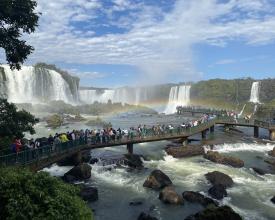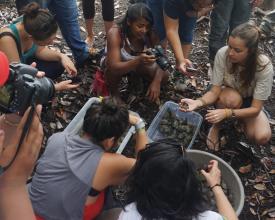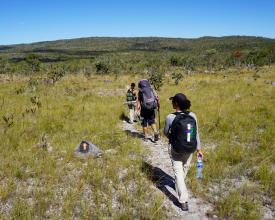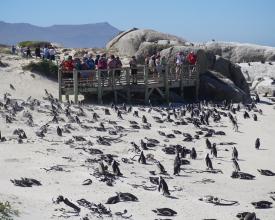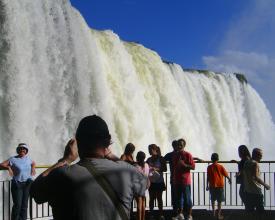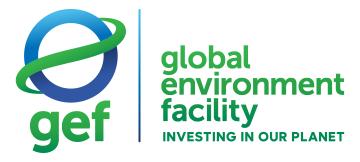
Evaluación del impacto económico del turismo en las áreas protegidas de Brasil
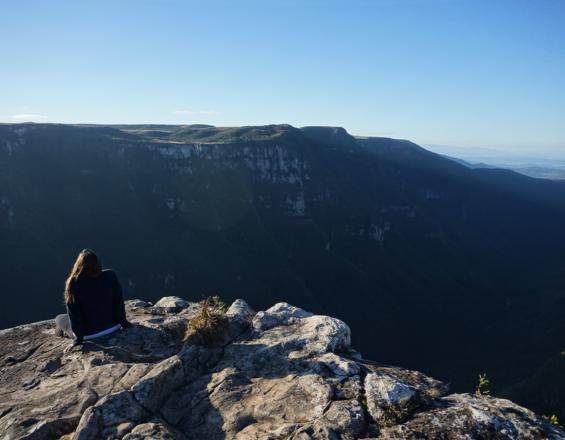
La evaluación del impacto económico del turismo en las áreas protegidas (AP) ofrece a los gestores de los parques de los países en desarrollo una forma de informar a las partes interesadas del valor de las AP no sólo para fines de conservación, sino como motores de un crecimiento económico de relativamente bajo impacto y alto valor añadido.
Se desarrolló un análisis del impacto económico del turismo para medir el gasto de los visitantes en torno a las AP de Brasil. El estudio reveló la magnitud económica de un importante servicio ecosistémico prestado por las AP: el turismo y el ocio al aire libre. Las visitas a las AP demostraron ser un mecanismo impactante para desarrollar las economías locales y la industria del turismo en Brasil, ya que cada dólar invertido en la gestión genera 7 dólares para la economía. La iniciativa reforzó que los impactos económicos del turismo influyen directamente en las AP, así como indirectamente en otros negocios y en las comunidades locales, generando mayores beneficios económicos para las comunidades locales que tienen una mayor dependencia familiar de los recursos naturales circundantes.
Contexto
Défis à relever
Las áreas protegidas (AP) pueden contribuir significativamente a las economías locales a través del gasto en bienes y servicios de los visitantes relacionado con el viaje, el gasto indirecto de la cadena de suministro, la actividad económica inducida por la presencia del AP y las operaciones del parque. Sin embargo, por lo general, los organismos responsables de las AP están más acostumbrados a elaborar informes financieros que sólo tienen en cuenta los ingresos directos (por derechos de entrada, concesiones, regalías sobre recursos, etc.) y los costes, sin tener en cuenta el valor monetario más amplio que generan las AP para las economías locales, provinciales y nacionales. A pesar de que las visitas son una fuente importante de ingresos para las AP, al ignorar la mayor contribución a la economía regional, los análisis financieros pueden inducir a error a los responsables de la toma de decisiones y al público en general.
Ubicación
Procesar
Resumen del proceso
El bloque de construcción muestra el proceso para desarrollar un análisis del impacto económico del gasto de los visitantes en las áreas protegidas.
El primer elemento explica que los organismos que gestionan áreas protegidas están acostumbrados a elaborar informes financieros sobre ingresos y costes directos. Es necesario identificar el problema de que los análisis financieros limitados infravaloran significativamente las áreas a los ojos de los responsables de la toma de decisiones y del público en general en comparación con los efectos económicos más amplios para las economías regionales, que a menudo ascienden a muchas veces los costes directos del funcionamiento de las áreas protegidas.
Para abordar este problema, el segundo bloque de construcción ofrece una herramienta de evaluación denominada Modelo Económico del Turismo en Áreas Protegidas (TEMPA) que ayuda a orientar a los gestores de proyectos y a otras personas en la elaboración de análisis económicos mediante la recopilación, el análisis y la visualización de datos sobre el gasto turístico a escala local y nacional.
El tercer elemento básico describe cómo utilizar los datos económicos del turismo para elaborar informes e influir en la toma de decisiones. El principal objetivo de los informes económicos sobre turismo y actividades recreativas son las relaciones públicas, aumentar el apoyo de la sociedad, aumentar los presupuestos de las AP, crear asociaciones e influir en las políticas locales y las decisiones de planificación.
Bloques de construcción
Identificar el problema: realizar un análisis económico en lugar de financiero
Los organismos que gestionan parques nacionales están acostumbrados a elaborar informes financieros que tratan de los ingresos y costes directos (incluidas las tasas de entrada, las concesiones, los cánones por recursos, etc.). Sin embargo, esta perspectiva no tiene en cuenta los efectos económicos más amplios de las áreas protegidas (AP), incluido su valor monetario y el empleo que generan para las economías regionales, que a menudo asciende a muchas veces los costes directos de funcionamiento del parque.
Brasil gestiona un sistema de 334 AP federales en un total de 170 millones de hectáreas. A pesar del enorme tamaño del sistema de APs junto con su importante biodiversidad, el presupuesto asociado no ha sido plenamente justificado en Brasil. Además, todavía era ambiguo con respecto al impacto y al valor añadido del turismo a través del gasto de los visitantes debido a la falta de investigación empírica. Por lo tanto, el propósito fue estimar los impactos económicos del turismo en el sistema federal de APs de Brasil.
Factores facilitadores
El análisis del impacto económico describe las interrelaciones entre los sectores económicos. Por ejemplo, los visitantes gastan dinero en las AP y en las comunidades de entrada, y sus gastos crean y apoyan la actividad económica local.
El análisis económico demuestra la contribución de las AP a las economías nacionales y locales a través del gasto de los visitantes en alojamiento, transporte, bienes y servicios durante su visita, el gasto indirecto de la cadena de suministro, la actividad económica inducida por la presencia del parque y las propias operaciones del parque.
Lección aprendida
Las AP aportan valor de muchas formas, incluidos los servicios ecosistémicos, la conservación de la biodiversidad, el disfrute humano y la actividad convencional. Esta herramienta mide la contribución de los parques a las economías nacionales y locales a través del gasto de los visitantes en alojamiento, transporte, bienes y servicios durante su visita, el gasto indirecto de la cadena de suministro, la actividad económica inducida por la presencia del parque y las propias operaciones del parque.
Los análisis financieros limitados infravaloran considerablemente los parques a los ojos de los responsables de la toma de decisiones, las empresas, los medios de comunicación y el público en general, en comparación con la economía más amplia estimulada por el gasto turístico.
Para estimar el valor total de los parques y conseguir un mayor apoyo público, varios países han empezado a realizar análisis económicos del gasto más amplio relacionado con los parques. Entre ellos se encuentran, por ejemplo, Estados Unidos, Canadá, Australia, Finlandia, Namibia, Sudáfrica y el caso que nos ocupa, Brasil.
Herramienta de evaluación del Modelo Económico del Turismo en Áreas Protegidas (TEMPA)
Como parte de un esfuerzo más amplio para evaluar los impactos socioeconómicos de las Áreas Protegidas financiadas por el FMAM, se desarrolló el Modelo Económico de Turismo para Áreas Protegidas (TEMPA, por sus siglas en inglés) para ayudar a guiar a los gestores de proyectos y a otras personas en la recopilación, el análisis y la visualización de los datos de gasto turístico mediante una herramienta basada en una hoja de cálculo fácil de usar, que también se proporciona. A pesar de que el análisis del impacto económico se ha aplicado en muchos países, como EE.UU., Canadá, Australia, Finlandia, Namibia y Sudáfrica, esta versión preliminar de la herramienta y la hoja de cálculo que la acompaña representan un paso inicial en un proceso más largo de prueba y perfeccionamiento de TEMPA en una amplia gama de categorías de áreas protegidas a nivel mundial. Por el momento, TEMPA sólo se ha probado en un parque seleccionado del sur de África, y a escala nacional para Brasil. Los resultados muestran importantes ganancias económicas directas e indirectas de los parques a nivel local y nacional. Se espera que el uso generalizado de herramientas como TEMPA pueda seguir aprovechando este esfuerzo para poner de relieve el importante papel polifacético que desempeñan las áreas protegidas en el apoyo a la naturaleza y los medios de subsistencia.
Factores facilitadores
Estimación de los efectos económicos del gasto de los visitantes
Efectos económicos = Número de visitantes * Gasto medio por visitante * Multiplicadores económicos
Para completar el análisis, el gestor que realiza el estudio de un parque necesita recopilar o estimar lo siguiente:
- el número de visitantes que acuden a los parques y alrededores
- el gasto medio por visitante en la región, y;
- aplicar multiplicadores económicos para medir el efecto dominó del gasto en la región (TEMPA).
Lección aprendida
El modelo TEMPA ayuda al gestor a introducir los datos y calcular el impacto económico de un parque. Establecer los cálculos para estimar los efectos económicos del gasto turístico puede parecer bastante desalentador, especialmente para las personas con poca experiencia en economía y en el análisis de datos económicos. Por lo tanto, el modelo que hará la mayor parte del trabajo, y es probable que sorprenda por lo fácil que es de usar.
Recursos
Utilizar los datos económicos del turismo para analizar, informar e influir en la toma de decisiones.
El objetivo principal de los análisis económicos del turismo y las actividades recreativas se han utilizado para objetivos de relaciones públicas. Los objetivos comunes de los análisis económicos del turismo han sido aumentar el apoyo para aumentar los presupuestos de las AP, para crear asociaciones y para influir en las políticas locales y las decisiones de planificación.
Estos tipos de usos requieren menores niveles de detalle o precisión en comparación con otros estudios centrados en la evaluación de alternativas de gestión para cuestiones específicas de las AP, como decisiones sobre nuevas inversiones, instalaciones o servicios. Por ejemplo, los gestores de parques pueden desear utilizar esta herramienta con fines de gestión adaptativa y/o integrar la evaluación del impacto económico con un análisis social o de los medios de vida del AP que revele beneficios y costes no monetarios. En tales casos, el estudio debe diseñarse de manera que permita estimar los impactos a nivel local.
Al mismo tiempo, es posible que los administradores gubernamentales deseen comparar el valor a nivel nacional de un parque con otros usos del suelo o parques en regiones similares. Lo importante es que se consulte a las principales partes interesadas antes de la fase de diseño, de modo que las medidas elegidas y su relación con el parque reflejen lo que se desea que conozca el público destinatario.
Factores facilitadores
La presentación de los resultados debe centrarse en la finalidad del informe y el público al que va dirigido. Las cifras y los ejemplos facilitan la comprensión del público. Para apoyar las presentaciones,
Lección aprendida
Los gestores de las AP deben comunicar los resultados del TEMPA para concienciar a los responsables políticos, las partes interesadas en la conservación y el comercio, las comunidades locales y el público en general del valor que tienen las AP no sólo para la conservación, sino también como motores de la distribución de beneficios.
Los resultados deben comunicarse en términos comprensibles para el público destinatario. Normalmente, un resumen y un glosario de términos económicos son útiles para la mayoría de las audiencias. Las medidas más comunes son ventas, ingresos, puestos de trabajo, PIB e impuestos; también se necesitan definiciones formales de las medidas para aclarar estos términos y las unidades de medida.
Impactos
Los impactos económicos del turismo ayudan a los gestores a informar a los responsables políticos, las partes interesadas, las comunidades locales y el público en general de los valores de las AP para la conservación y la distribución de beneficios.
Los resultados en Brasil, por ejemplo, identificaron que cada dólar que el país invirtió en el sistema de AP produjo $ 7 en beneficios económicos. En 2017, los 10,7 millones de visitantes gastaron alrededor de U$ 530 millones en las comunidades locales alrededor de las AP. La contribución total de estos gastos a la economía nacional fue de alrededor de 80 mil puestos de trabajo, U$ 583 millones en ingresos, U$ 822 millones en valor agregado al PIB y U$ 2,2 mil millones en ventas. En cuanto a los impuestos, se generó un total de U$ 38 millones en el ámbito municipal; en el estatal, U$ 130 millones y en el federal, U$ 71 millones; totalizando U$ 240 millones en impuestos.
Los resultados están ayudando a los responsables políticos, a las partes interesadas en la conservación y el comercio, a las comunidades locales y al público en general del valor que las AP tienen para la conservación, así como de motores para la distribución de beneficios. Los resultados se utilizaron, por ejemplo, para aprobar la Ley No. 13.668 / 2018, que mejoró la legislación para la concesión de servicios de recreación en áreas protegidas federales en Brasil.
Beneficiarios
Los impactos económicos del turismo en las áreas protegidas ofrecen una forma de informar a las partes interesadas sobre el valor de las áreas protegidas no sólo para fines de conservación, sino como motores de un crecimiento económico de relativamente bajo impacto y alto valor añadido.
Marco Global para la Biodiversidad (GBF)
Objetivos de Desarrollo Sostenible
Historia
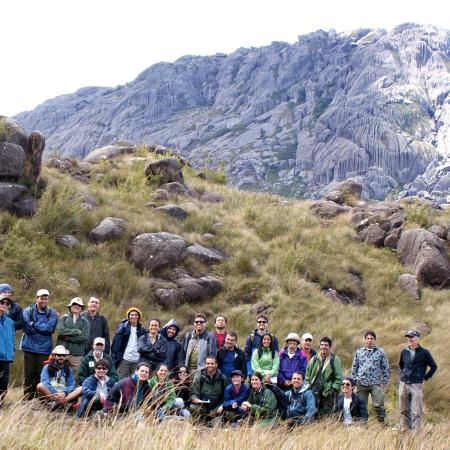
Brasil elaboró en 2017 su primer informe sobre la contribución económica de los visitantes a las áreas protegidas federales. Los gestores de parques están entusiasmados con este tipo de datos. Entienden que el análisis económico es una herramienta importante para demostrar los valores de las áreas protegidas al público general que no está interesado en la conservación.
En un momento en el que el país se enfrenta a una recesión económica, el análisis económico del turismo es una forma de informar a las partes interesadas del valor de las áreas protegidas no solo para la conservación, sino como motores de un crecimiento económico de relativamente bajo impacto y alto valor añadido, presentando cuántos puestos de trabajo, ingresos y PIB se generan.
Los resultados se utilizan ahora en presentaciones de gestores y directores de parques, por periodistas y otras partes interesadas que abogan a favor de la conservación. La afirmación de que cada dólar invertido en el sistema de áreas protegidas producía 7 dólares en beneficios económicos se convirtió en un mantra para el personal de la agencia.


